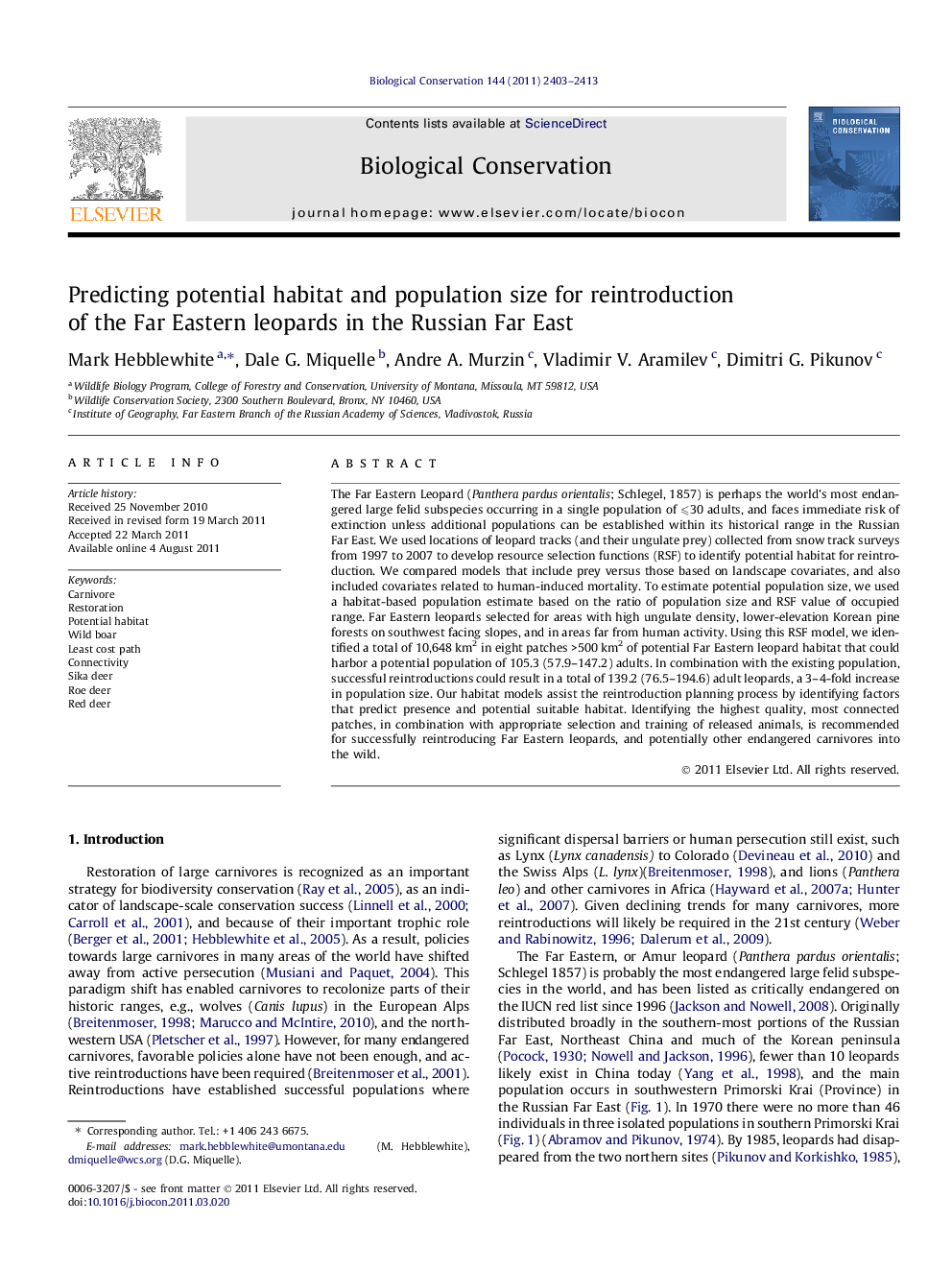| Article ID | Journal | Published Year | Pages | File Type |
|---|---|---|---|---|
| 4385408 | Biological Conservation | 2011 | 11 Pages |
The Far Eastern Leopard (Panthera pardus orientalis; Schlegel, 1857) is perhaps the world’s most endangered large felid subspecies occurring in a single population of ⩽30 adults, and faces immediate risk of extinction unless additional populations can be established within its historical range in the Russian Far East. We used locations of leopard tracks (and their ungulate prey) collected from snow track surveys from 1997 to 2007 to develop resource selection functions (RSF) to identify potential habitat for reintroduction. We compared models that include prey versus those based on landscape covariates, and also included covariates related to human-induced mortality. To estimate potential population size, we used a habitat-based population estimate based on the ratio of population size and RSF value of occupied range. Far Eastern leopards selected for areas with high ungulate density, lower-elevation Korean pine forests on southwest facing slopes, and in areas far from human activity. Using this RSF model, we identified a total of 10,648 km2 in eight patches >500 km2 of potential Far Eastern leopard habitat that could harbor a potential population of 105.3 (57.9–147.2) adults. In combination with the existing population, successful reintroductions could result in a total of 139.2 (76.5–194.6) adult leopards, a 3–4-fold increase in population size. Our habitat models assist the reintroduction planning process by identifying factors that predict presence and potential suitable habitat. Identifying the highest quality, most connected patches, in combination with appropriate selection and training of released animals, is recommended for successfully reintroducing Far Eastern leopards, and potentially other endangered carnivores into the wild.
► The Far Eastern Leopard is perhaps the world’s most endangered large cat subspecies. ► We identified habitat for reintroductions and potential population size. ► Leopards required high ungulate densities and low human activity. ► We identified >10,000 km2 of potential leopard habitat for 105 adult leopards. ► Reintroduction into high quality habitat is required for recovery.
